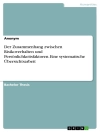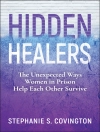This book is both a sequel to and expansion of Community Psychology, published in 1992. It serves as a textbook for courses on community psychology but now also includes material on inequality and health, since both are concerned with the way an individual’s social setting and the systems with which they interact affect their problems and the solutions they devise. Part 1 sets the scene by locating community psychology in its historical and contemporary context. In Part 2, disempowered groups and their physical and mental health are considered. Finally in Part 3 the application of community psychology is discussed, and the ways in which marginalised people can be helped by strengthening their communities highlighted.
İçerik tablosu
About the Author.
Preface.
Acknowledgements.
PART I. THE BACKGROUND TO COMMUNITY PSYCHOLOGY AND WHAT IT
STANDS FOR.
1. Challenging Psychology Over its Neglect of the
Social.
The individualism of psychology.
The new public health psychology.
Critical psychology.
2. Community Psychology’s Core Values: Empowerment,
Liberation and Social Justice.
Empowerment.
Social constructionism and its critics.
Liberation psychology.
Social justice as a core value.
3. The Debate over Knowledge in Community Psychology.
Dissatisfaction with existing research methods.
Support for qualitative research.
Participatory and action research.
Negotiating the community psychology researcher’s
role.
What kind of science is community psychology?
PART II. UNDERSTANDING INEQUALITY AND ITS EFFECTS ON
HEALTH.
4. Social Position and Inequalities in Health.
The accumulation of evidence that health is related to social
position.
Social class’: complexities and controversies.
Inequality of income distribution.
Psychosocial versus material explanations.
5. Place and its Influence on Health and Well-being.
Evidence for the influence of area on health and well-being.
How neighbourhoods may (fail to) meet local health needs.
6. Two Concepts for Understanding Inequalities by Position
and Place.
Social capital.
Sense of community.
PART III. THE EXPERIENCE OF DISEMPOWERMENT: SEVEN
EXAMPLES.
7. Disempowerment by War, Immigration, Homelessness or
Unemployment.
Communities caught up in war and its consequences.
Groups of people adjusting to a new country.
Experiencing homelessness.
The unemployed and the under-employed.
8. Disempowered Because of Income, Gender, or Sexual
Orientation.
The poor and socially excluded.
Women.
Lesbian, gay, bisexual and transgendered people.
PART IV. COMMUNITY PSYCHOLOGY ACTION: FROM SUPPORT TO
LIBERATION.
9. Strengthening Social Support for Members of Disempowered
Groups.
Social support for young people.
Social support interventions for women.
Support for those with illness or disability or for their
families.
Responding to domestic violence.
Support for LGBT groups.
10. Social Action and Innovation.
Moving to collective social action.
Experimental social innovation and dissemination.
11. Empowering Communities.
The theory of community coalitions.
Collaborations, consortia and coalitions: examples of
projects.
Young people and collective action.
12. Participation and Liberation.
Participation in local action.
Drawing on a diversity of world views.
Projects to protect and sustain natural resources.
Towards liberation for the poor and oppressed.
Finale – Consensus and Challenge.
References.
Author Index.
Subject Index.
Yazar hakkında
Professor Jim Orford, University of Birmingham, UK












